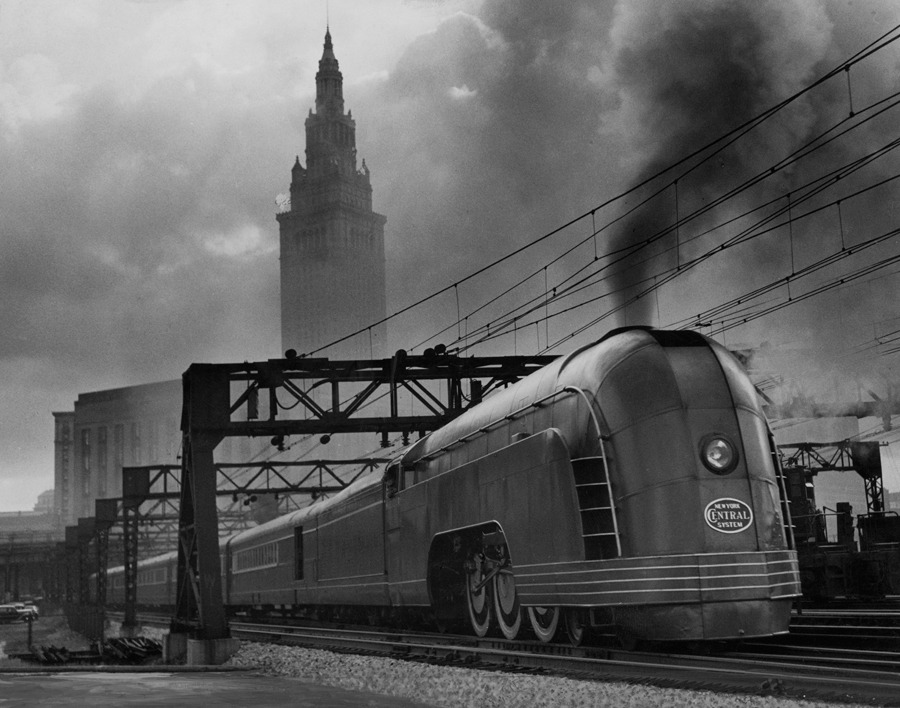 |
| A rare and bizarre photograph of the unfinished Golden Gate Bridge, back when San Francisco—like much of the world—was black and white (Seriously, folks—where would we be without color television?). After four years of construction, the world-famous bridge hosted "Pedestrian Day" on May 27, 1937, and opened to vehicular traffic the very next day ("Bridge History and Construction"). (ca. 1935) |
 |
Louis Armstrong serenades his wife in perhaps the most romantic of settings: in front of the Sphinx and the Great Pyramids of Giza (note: This is a colorized version of the original photograph). Next to the 4500-year-old ancient Egyptian wonders, "Satchmo" was actually quite young at 60 years old. Three years later, when Armstrong's "Hello, Dolly!" knocked The Beatles' "Can't Buy Me Love" off the top of the charts, he became the oldest artist to ever hold the number one spot on the Billboard Hot 100 ("Chart Beat Chat"). A true legend indeed. (ca. 1961)
|
 |
| A gorgeous New York Central Mercury train departing Cleveland’s Union Station in the mid-1930's. The Mercury train series was designed by Henry Dreyfuss, the industrial designer responsible for the Western Electric 302 Telephone and the iconic John Deere Model A Tractor ("Henry Dreyfuss"). Cleveland... was not so fortunate in its design. (ca. 1936) |
 |
| Poetry in Motion: The 1966 NBA Finals, which pitted the Boston Celtics against the Los Angeles Lakers, as shot by Walter Iooss. Perhaps even more striking than Bill Russell's imposing defensive posturing is the lack of corporate advertisement that dominates today's arenas (and tomorrow's uniforms…). (ca. 1966) |
_________________________________________________________________________________
"Biography of Diana, Princess of Wales." BiographyOnline.net. Biography Online, Web. 27 Feb. 2014. <http://www.biographyonline.net/people/biography_princess_diana.html>.
"Bridge History and Construction." GoldenGateBridge.org. Golden Gate Bridge Highway & Transportation District, Web. 27 Feb. 2014 <http://goldengatebridge.org/research/facts.php#HowLongtoBuild>.
Bronson, Fred. "Chart Beat Chat." Billboard.com. Billboard, Web. 27 Feb. 2014. <http://www.billboard.com/articles/news/1046517/chart-beat-chat>.
"Henry Dreyfuss." CooperHewitt.org. Smithsonian Cooper-Hewitt, National Design Museum, Web. 27 Feb. 2014. <http://www.cooperhewitt.org/tagged/henry-dreyfuss>.





